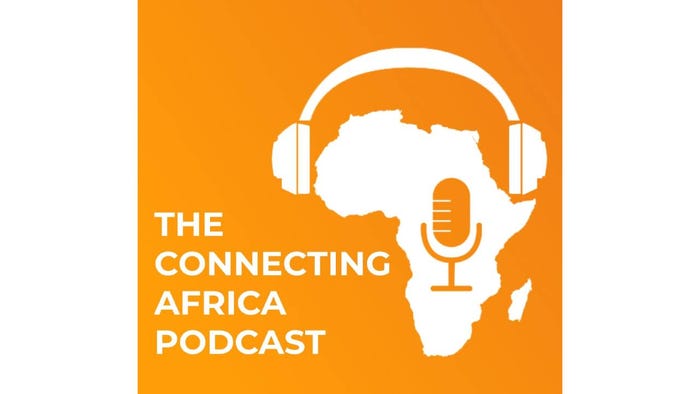Telecoms liberalization in Africa, what lies ahead for national operatorsTelecoms liberalization in Africa, what lies ahead for national operators
ICT Analyst Francis Hook outlines Africa's telecommunications liberalization journey and discusses the paths that national operators can take to successfully move into the digital era of telecoms.

Telecommunications liberalization in Africa during the 90s – more than 30 years ago – was underpinned by various motivations including promoting competition by dismantling monopoly markets held by governments, attracting new investments, and enhancing quality and variety of services as well as fostering service innovation.
Liberalization of the telecommunications sector in Africa was largely characterized by the unbundling of traditional post and telecommunications operators into postal, telecommunications and regulatory entities.
Prior to this, requisite legislations needed to be enacted to provide for the creation of these entities as well as outline their mandates, and especially those of newly created independent regulators.
Laws relating to regulation also outlined different types of licenses which were each subject to various conditions including exclusivity durations, types of services provided, coverage targets, quality of service, tariffs and interconnection, among other areas that were needed to foster competition while maintaining a level playing field.
For the most part, the initial stance by most governments was to protect state-owned operators against competition via measures such as prescribing exclusivity periods for the operation of international gateways for both voice and data traffic, capping of tariffs (to prevent price wars), and interconnection guidelines.
Telco license evolution in Africa
Generally initial market liberalization involved a mix of licensing a second national operator (South Africa, Uganda, Ghana, Tanzania), second mobile operators and regional or local loop operators (Kenya and Nigeria), as well as other technology-based licenses.
In most instances, before unified licenses were issued around the mid noughties, most licenses were technology based – very small aperture terminal (VSAT) licenses rather than Internet licenses irrespective of technologies used.
For mobile licenses, there were typically exclusivity periods of five to ten years to allow new investors a chance to recoup investments and gain a solid foothold in the market.
State-owned national operators, even where partially privatized, enjoyed monopoly exclusivity periods over international gateways, thereby requiring all other operators to route their international traffic through such gateways.
In nearly all markets, Voice-over-Internet-Protocol (VoIP) services were initially prohibited mainly to protect national operators. But as technological advances made use of VoIP services inevitable, regulations were relaxed to allow certain types of VoIP services and especially where national operators stood to benefit.
Another key hallmark of most markets – which to a great extent dictated the approach to regulation around international voice and data traffic – was that during the late 90s and up until the mid-noughties, most international connectivity for both voice and data was attained via satellite.
For this, national operators were key players having made bi-lateral agreements with different countries for the carriage of international traffic which was a key revenue source. It should be noted that at the time there was a "thin strand" of fiber – SAT3/SAFE – running from South Africa to Asia.
Other key infrastructure highlights included domestic satellite networks and international earth stations operated by state-owned players. In a few instances, after market liberalization, there were private players offering VSAT hubbing services.

From the late 1990s to the mid-2000s, most international connectivity for both voice and data was attained via satellite.(Source: Image by macrovector on Freepik).
In some markets, privatization and liberalization was preceded by placing state-owned operators under management contracts to rationalize staff headcounts, make them commercially viable and overall to ensure they were ready to compete with private operators.
To date – given that some of these operators have failed to maintain or grow their market share or faltered under the pressure of rival services like mobile – it remains academic whether such measures were successful.
Some operators have undergone multiple ownership changes with foreign investor electing to divest even before breaking even.
Waves of telecoms liberalization
The liberalization process has also undergone various waves of regulatory reform, starting with initial regulatory frameworks at the outset of liberalization.
This was followed by amendments that allowed for more operators and services, coupled with unified services licenses as technological advances allowed operators to enter new fields for which they were not in initially licensed, for example Internet services.
Presently, most countries are at the cusp of making the transition to digital regulations to take technological advancements into account which have essentially changed the complexion of the market from both service provision and consumption points of view.
To an extent, these new digital regulations will have bearing on the trajectory of the market and some are required to allow for the adoption of new services such as Internet of Things (IoT), artificial intelligence (AI) and cloud computing.
With that backdrop, and against the onslaught of mobile operators and over-the-top (OTT) providers eroding traditional operators' revenues, especially for voice services, state-owned players have found themselves at a juncture at which they need to re-invent themselves.
Over the past decade, some have sought to make forays into enterprise IT services either by shoring up their skills to support such services or acquiring existing players in this space through which they can bundle existing connectivity and voice services.
Yet others have tried to carve out a bigger share in wholesale and data center services space.
For the most part, state-owned operators have been sustained by the provision of various services to government departments, public sector education and healthcare which are among their biggest clients, whose revenues have allowed them to keep the lights on.
In some cases, governments have invested, via partnerships with equipment providers, to set up national terrestrial fiber which they lease to other players and accrue some revenue.

Many countries in Africa are at the cusp of making the transition to digital regulations which will have bearing on the trajectory of the adoption of new services like IoT, AI and cloud computing. (Source: Image by kjpargeter on Freepik).
It may be impossible to turn the tide against which state-owned operators find themselves, more so in terms of losing market share to both mobile operators for voice and other players for Internet services, and at the same time not enjoying the same standing among businesses and consumers as private sector players.
However, several considerations could be borne in mind by regulators and operators themselves that can help existing operators evolve and remain competitive.
Liberalization success in Africa
Some of the liberalization success stories across Africa include:
Creating separate infrastructure entities and using them to provide wholesale services to other market players.
More so where regulations allow for smaller last mile access players for Internet and other services. This way the focus need only be on developing and managing national infrastructure – data centers, terrestrial fiber, microwave services, towers and other infrastructure that can be shared or leased out.
Ethiopia is one of the more recent market liberalizations poised to follow this path as articulated by its privatization intentions.
Regulatory reforms, especially those that are cognizant of new technological and market realities, offer latitude for regulators to consider areas when evolving market regulations can allow traditional players to enter new spaces like data center-based services – including cloud computing services like Software-as-a-Service (SaaS), Platform-as-a-Service (PaaS), and Infrastructure-as-a-Service (IaaS) – as well as AI and IoT.
Requisite regulations that address data protection, intellectual property and privacy would be among some of those that allow uptake of such service by end users and would require robust engagement outside traditional sector regulation and include government policy and law-making organs like the legislature.
Enabling policies and regulations that have keen focus on areas where technology interventions can have an impact – such as education, healthcare, government and business – merit attention since these sectors lie in the immediate periphery of national development and also invariably are focus areas of national government strategies.
Investment policies need to address current market realities and make a departure from the old stance where national operators and their assets and services as seen to serve the state and national interests.
Interventions by governments include those that enable private investment including encouraging state-owned operators to become listed on local and regional bourses.
Aside from the private investment attracted this way, there is to a certain extent a degree of transparency and accountability that accrues, making such entities less likely to pander to political ambitions, which for the greater part have caused state-owned entities to be encumbered by all manner of challenges and thereby atrophy as going concerns.
Avoiding pitfalls
Markets that are more recently liberalized like Ethiopia would do well to avoid certain pitfalls that have affected national operators in other markets.
These include avoiding exclusivity periods for international gateways which temporarily shield national operators from competition and stifle investment. Often, after the expiry of such exclusivity periods, national operators have for the most part stepped aside and watched their market share in international traffic become eroded since they are cash constrained and seldom make investments to strengthen their position in international traffic.
Overall, given the pace of technological developments and their influence on both demand and supply markets, such changes will invariably always make it difficult to define any end games.
As such, regulators and operators must remain poised to quickly adapt to market shifts and always seek to emulate best practices from outliers – even those outside Africa – rather than have their view of the market limited by broad consensus articulated about what fits the current African market context.
Concerted efforts towards these areas, between state-owned entities, regulators and policy makers are imperative if state-owned entities are to evolve and remain relevant players in the telecommunications landscape.
Related posts:
*Top image source: Image by user3802032 on Freepik.


_(1).jpg?width=700&auto=webp&quality=80&disable=upscale)

.jpg?width=700&auto=webp&quality=80&disable=upscale)
_(1).jpg?width=700&auto=webp&quality=80&disable=upscale)
.jpg?width=700&auto=webp&quality=80&disable=upscale)
.jpg?width=700&auto=webp&quality=80&disable=upscale)
.jpg?width=700&auto=webp&quality=80&disable=upscale)
.jpg?width=700&auto=webp&quality=80&disable=upscale)
.jpg?width=800&auto=webp&quality=80&disable=upscale)


.jpg?width=700&auto=webp&quality=80&disable=upscale)